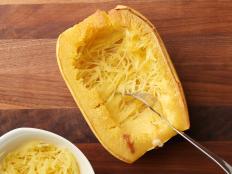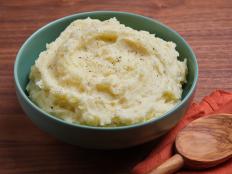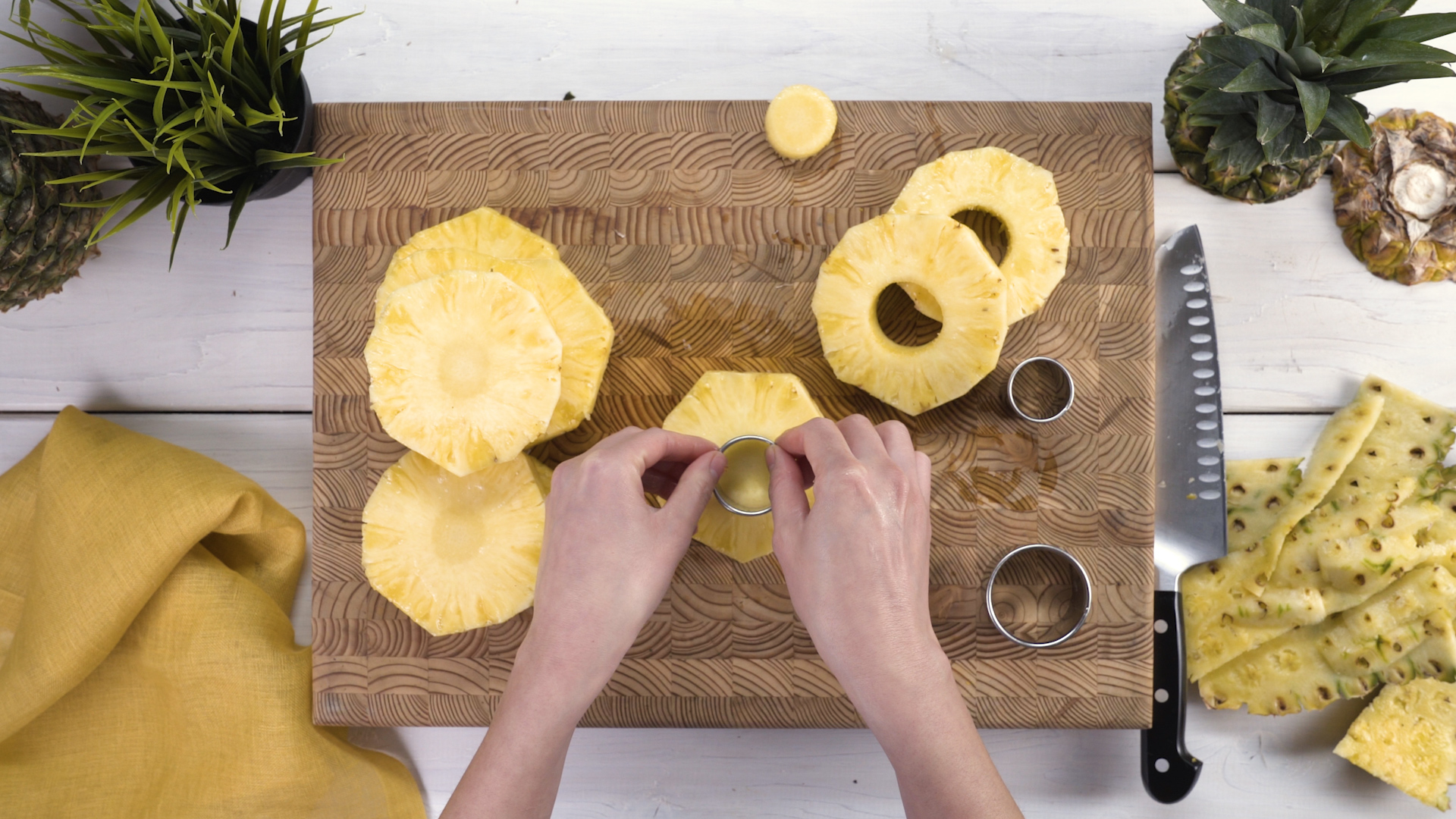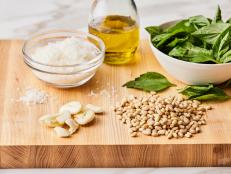We Taste-Tested All the Canned, Boxed and Jarred Tomatoes — Here Are the Ones You Should Buy
Plus, everything you need to know about each type.

Photograph by Alexis Pisciotta
Written by Alexis Pisciotta for Food Network Kitchen
Canned, bottled or boxed tomato products are the perfect pantry staple. They last forever, are inexpensive, versatile, and most importantly, allow you to have great-tasting tomatoes even when they aren’t in season. However, with so many different tomato varieties out there — puree, passata, D.O.P., sauce, crushed, etc. — choosing the right one for your specific tastes and needs can be a bit overwhelming. Since no two tomatoes (or tomato products) are the same, educating yourself about their differences is essential. Here’s our crash course on all the telltale characteristics you can look out for the next time you find yourself in need of a tomato product or two.
Whole Peeled Tomatoes
Whole peeled tomatoes refer to plum tomatoes that have been picked at their ripest and have been peeled and sealed as a whole in a container while being sterilized with heat. This variety of tomato is most often associated with Italian tomato sauces, but they work well in pretty much anything you might need tomatoes for, like soups, chili and curries. D.O.P. and "San Marzano" are the two most readily available kinds of whole peeled tomatoes in grocery stores. These two terms go hand in hand, but they are not interchangeable.
What is a D.O.P. Tomato?
D.O.P. stands for Denominazione d’Origine Protetta (or Protected Designation of Origin). What this means is that any product marked with D.O.P. is guaranteed to have been produced, processed and packaged in a specific area, and is regulated every step of the way by the EU to ensure a consistent and specific outcome. If you buy a D.O.P. can of tomatoes, you can be certain you are getting "San Marzano" tomatoes, and they are going to be delicious. They will never be sold crushed, pureed, or with calcium chloride added, because that’s not in the regulations.
What is a "San Marzano" Tomato?
"San Marzano" refers to a region in Italy that’s known for a particular type of plum tomato. These tomatoes have a reputation for being well-balanced in flavor. They also have a thick flesh, a small amount of seeds and less juice. Despite this, you’ll still want to check the label to find out where the tomatoes you’re buying were grown and packaged. Some domestic producers are using "San Marzano" as their brand name, which can be slightly confusing.
What to Look Out For When Shopping
When buying "San Marzano" or D.O.P. whole peeled tomatoes, you want to check the ingredients list found at the back of each can. Whole peeled tomatoes sometimes have calcium chloride added to them, which is included to help the tomatoes keep their shape during the canning process. These tomatoes will take forever to break down while cooking. The calcium chloride also changes the flavor of the tomatoes, so try to stay away from those if you are making tomato sauce.
Our Picks: Gustarosso D.O.P. Whole Peeled Tomatoes (pictured above) are super sweet, don't have any added sugar and have a ripe tomato flavor. Alessi D.O.P. Whole Peeled Tomatoes are a close second on sweetness, while Rega and La Valle D.O.P. are excellent choices too. Rega has a smokey quality to it and La Valle tastes fresh and less salty. Lastly, Cento "San Marzano Certified" and La Fede D.O.P are widely available and are less sweet, more tangy and acidic.
Shop More:
Crushed Tomatoes

Photograph by Alexis Pisciotta
Crushed tomatoes are whole peeled tomatoes that have been broken up and canned — sometimes in their own juices, and sometimes with a little puree added. As a result, they can vary in texture and thickness. Often referred to as "chopped tomatoes," or "tomato pulp," crushed tomatoes are a great time saver, if you're putting together a dish and don’t want to use whole tomatoes. It should be noted that there can be bits of tomato skin, seeds and cast-offs found inside the boxes and cans that hold crushed tomatoes, so don’t be surprised if you see some floating around!
Our Picks: Posardi Finely Chopped Tomatoes (pictured above) are dark red in color and have a deep, sweet tomato flavor. Since they are grown in Sardinia, they don’t fall under the D.O.P. designation, either! Colavita Crushed Tomatoes are grown in the Po Valley of Italy, and are packed in a carton. No salt is added during processing, so remember to add more when cooking with this version as conventional tomato products have a fair amount of salt in them. If you're looking for American brands, Redpack Crushed Tomatoes outshine all the others.
Tomato Puree, Passata and Strained Tomatoes
What is Tomato Puree?
"Tomato puree" can refer to a few different things. Some brands, like Redpack for example, describe themselves as "tomato puree made from water and tomato paste" while others like Cento just say "tomato puree" on their ingredients list. These tomato-based purees go through a lot of processing before being added to their cans. As a result, they taste more like tin and less like tomato.
What is Tomato Passata/What are Strained Tomatoes?
If you are looking for something that looks and tastes like actual pureed tomatoes, tomato passata and strained tomatoes make a great choice. These products are usually packaged in jars or biopack cartons, similar to the ones Pomi comes in. Passatas and strained tomatoes are brighter in color, smell fresher, don’t taste tinny and are slightly rougher in texture than their canned counterparts. Ingredient lists for passatas and strained tomatoes say things like, "organic strained tomatoes" or "tomatoes and sea salt." They have a purer tomato flavor because they haven’t gone through a lot of processing.
The tomatoes that make up tomato passata and strained tomatoes are also just seeded, skinned, pureed and then pasteurized. This makes them well-suited for quick cooking and are a great choice when you want that silky smooth tomato sauce without the incorporated air. These tomato purees are more expensive than their canned, paste-based counterparts because they use actual tomatoes and not by-products of tomato processing.
Our Picks: Mutti Tomato Puree Passata (pictured above) is smooth and well-seasoned, if not a bit salty (which is totally fine in our books!) You also don’t need to do a lot to this product to make it taste good, and it's well-suited for short cooking times. Pomi Strained Tomatoes taste fresh and bright. There is no salt added, so you’ll need to add more when using them. Bionaturae Organic Strained Tomatoes are very similar to Pomi, but are thinner in texture and lighter in flavor.
Shop More:
Tomato Paste
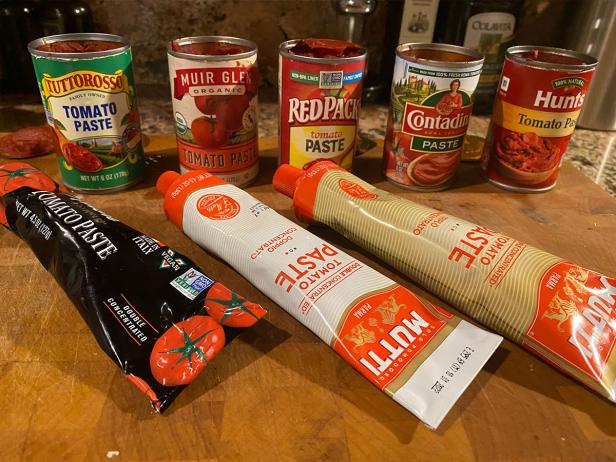
Photograph by Alexis Pisciotta
Tomato paste is an indispensable ingredient. A couple tablespoons, when added to a bit of olive oil, adds both body and a powerful punch of umami to stews, braises and stocks. It can even be used as a condiment!
What is Tomato Paste?
Tomato paste is made by pureeing then straining tomatoes. When this is done, all the liquid inside a tomato is cooked out of it, then concentrates into a paste. It can also be made by drying the tomato puree in the sun. Though tomato paste is often sold in cans, it can also be found in tubes or jars. Cans of tomato paste are inexpensive and easy to find. Though they can taste a little tin-like, if cooked properly, they work just fine. Tubes of tomato paste are more convenient — just squeeze out what you need and snap the cap back on! Since the paste isn’t exposed to as much air in the tube, it lasts longer too.
What to Look Out For When Shopping
When shopping for tomato paste, you might see the term "double concentrated," or even "triple concentrated" listed on some of the Italian brands. These aren’t necessarily more concentrated than their American counterparts, it’s just that Italian tomato paste, or tomato concentrate, has a different standard. Both double and triple concentrated tomato pastes can be used interchangeably in recipes with canned tomato pastes.
Our Picks: Mutti Triple Concentrated Tomato Paste (see above) has an intense tomato flavor with no tinny taste.The tube makes for easy use and lasts a long time. Bonus points for Mutti's sustainability measures too! The Double Concentrated Version is also great and only a hair lighter. Amore Double Concentrated Tomato Paste in the tube is an excellent choice, with a rich mouthfeel and strong umami flavor. Contadina Tomato Paste has a bright tomato flavor and makes a great canned option.
Shop More:
Diced Tomatoes
Diced tomatoes are tomatoes that have been peeled, diced and canned in their own juices. They are treated with calcium chloride to hold their shape after canning, which makes them a good substitute for raw tomatoes in a pico de gallo or bruschetta topping when there isn’t a ripe tomato in sight. Calcium chloride can add a flavor that can be off-putting, though. It can be easily masked with additions like lime and cilantro, or roasted chiles, but it isn’t well suited for marinara or shakshuka, where the off-flavors really come through. You can chose from a variety of diced tomatoes, such as fire-roasted, which adds a great charred taste, green chile for a spicy kick, or lime juice and cilantro and tomato basil.
Our Picks: Rotel Diced Fire Roasted Tomatoes and Green Chiles (see above) have a good charred flavor and nice heat from the addition of green chiles. They are a good choice for a salsa or a cheese dip, where you want pronounced chunks of tomato. Pomi Chopped Tomatoes don’t have calcium chloride added, so they won’t hold their shape as well, but they taste super fresh and bright without the tinny aftertaste, so it's a good choice if you're planning to make a quick pan sauce.
Shop More:
Tomato Sauce
Canned tomato sauce means something different brand to brand. Many canned tomato sauces list "tomato puree" as their first ingredient, while others include "tomato paste and water." Other common ingredients used include onion and garlic powders, citric acid (for preserving) and salt. It’s hard to compare all of these sauces because they aren’t the same thing. While an 8-ounce can of Goya tomato sauce might be great to thicken and add flavor to your Arroz e Gandules, it might not be the right addition to a pantry Pasta e Fagiole, so this one really depends on what your using it for.
Our Pick: Contadina Tomato Sauce (see above) is a good choice if you truly don’t have time to make your own tomato sauce for pasta, and want a smooth, neutral sauce that isn’t heavy on the garlic, acid or sugar. Another plus? It has absolutely no added thickeners. It’s a bit heavy on the salt, which is common in canned tomatoes, but tastes like an actual tomato sauce without the added sweeteners, dry spices and soybean oil that many of the national brand marinara sauces have.
Related Content:









































